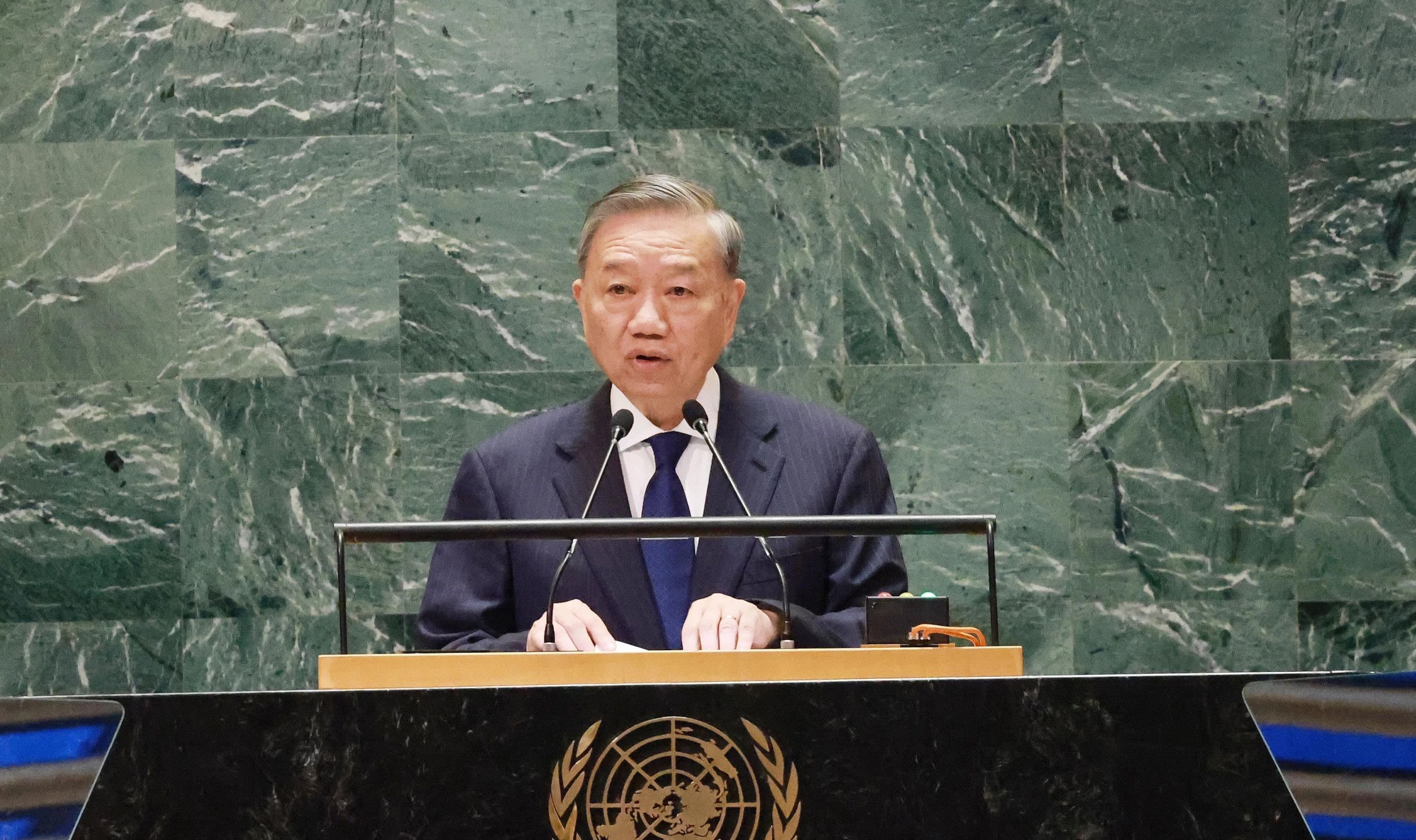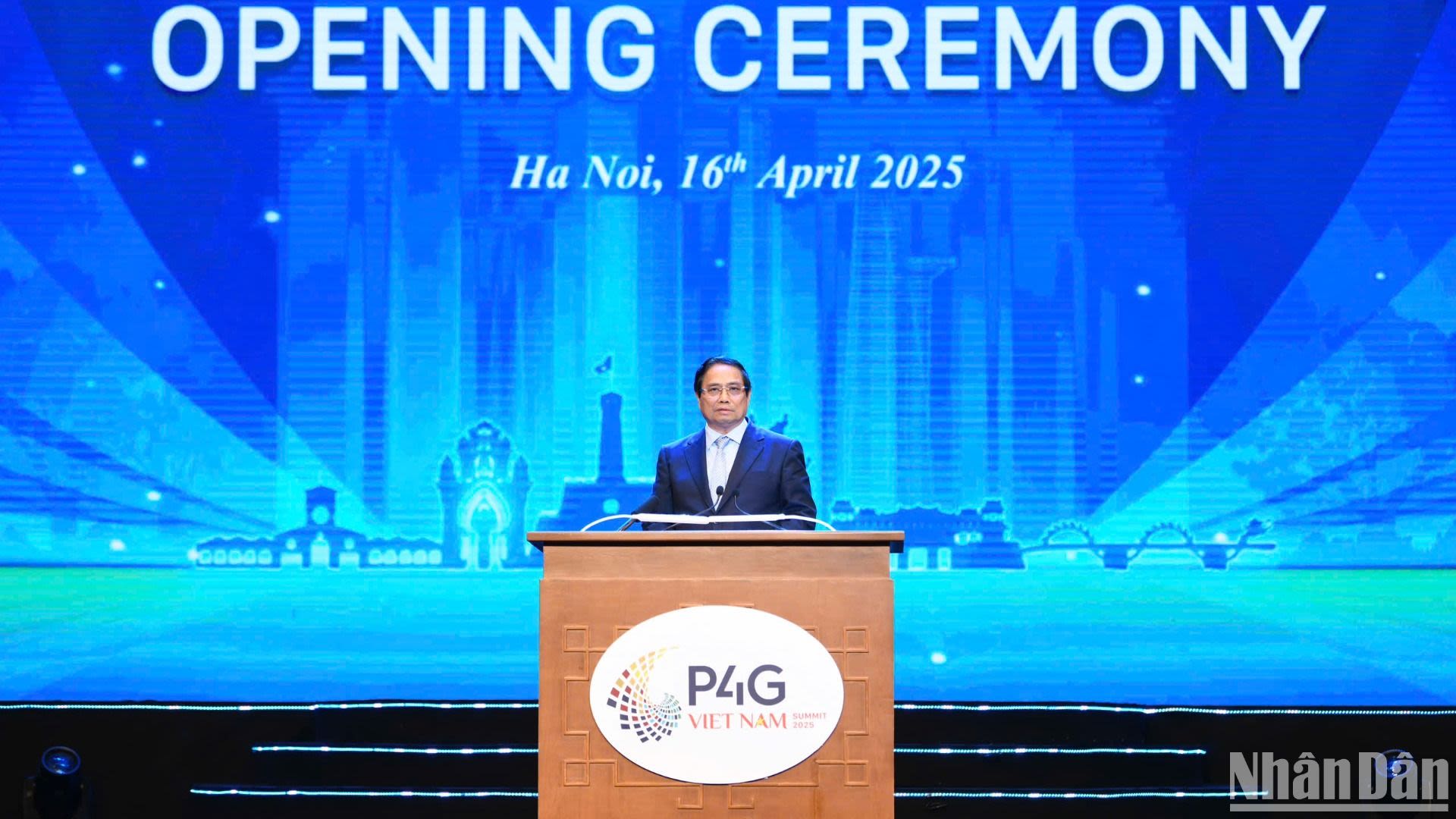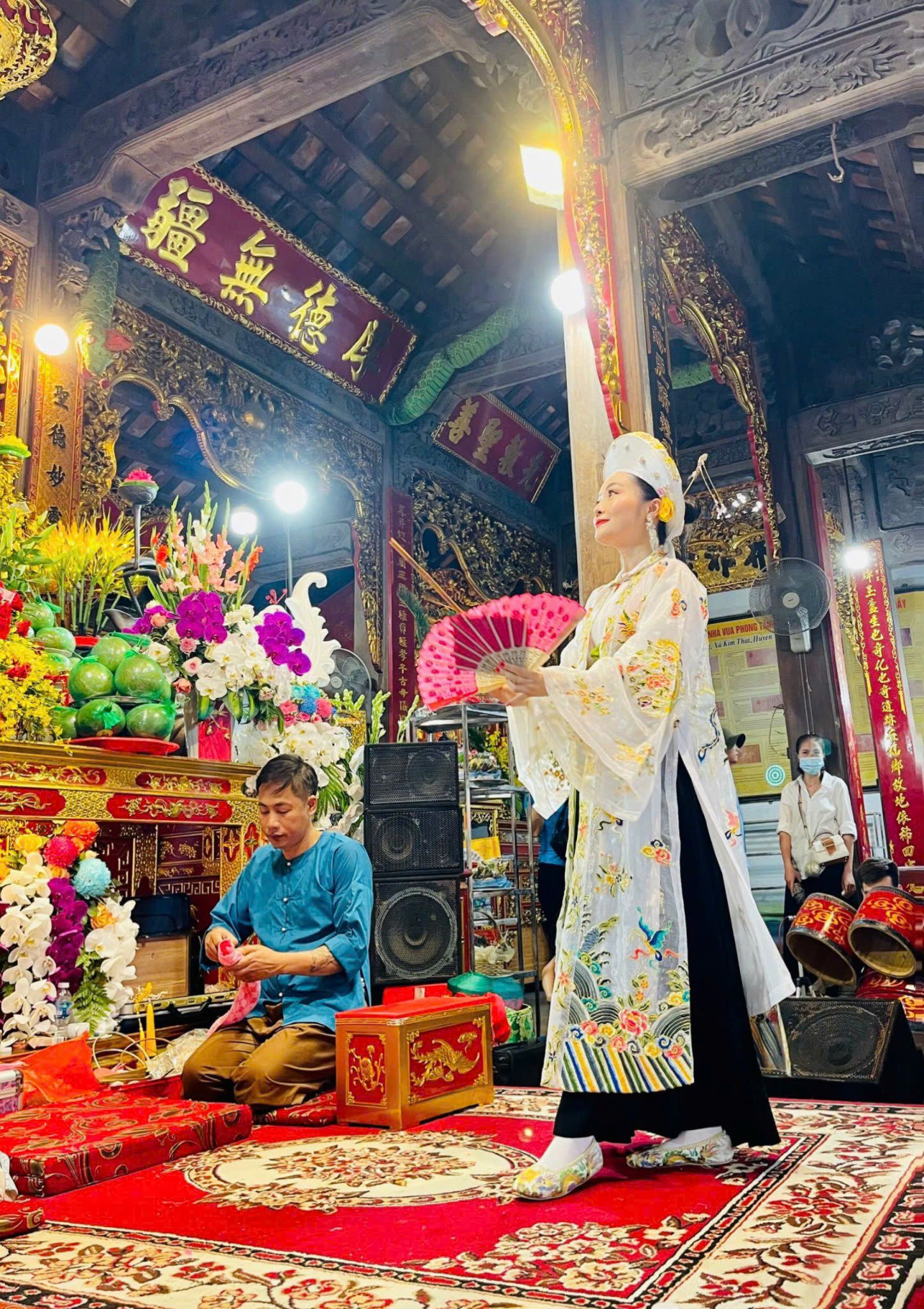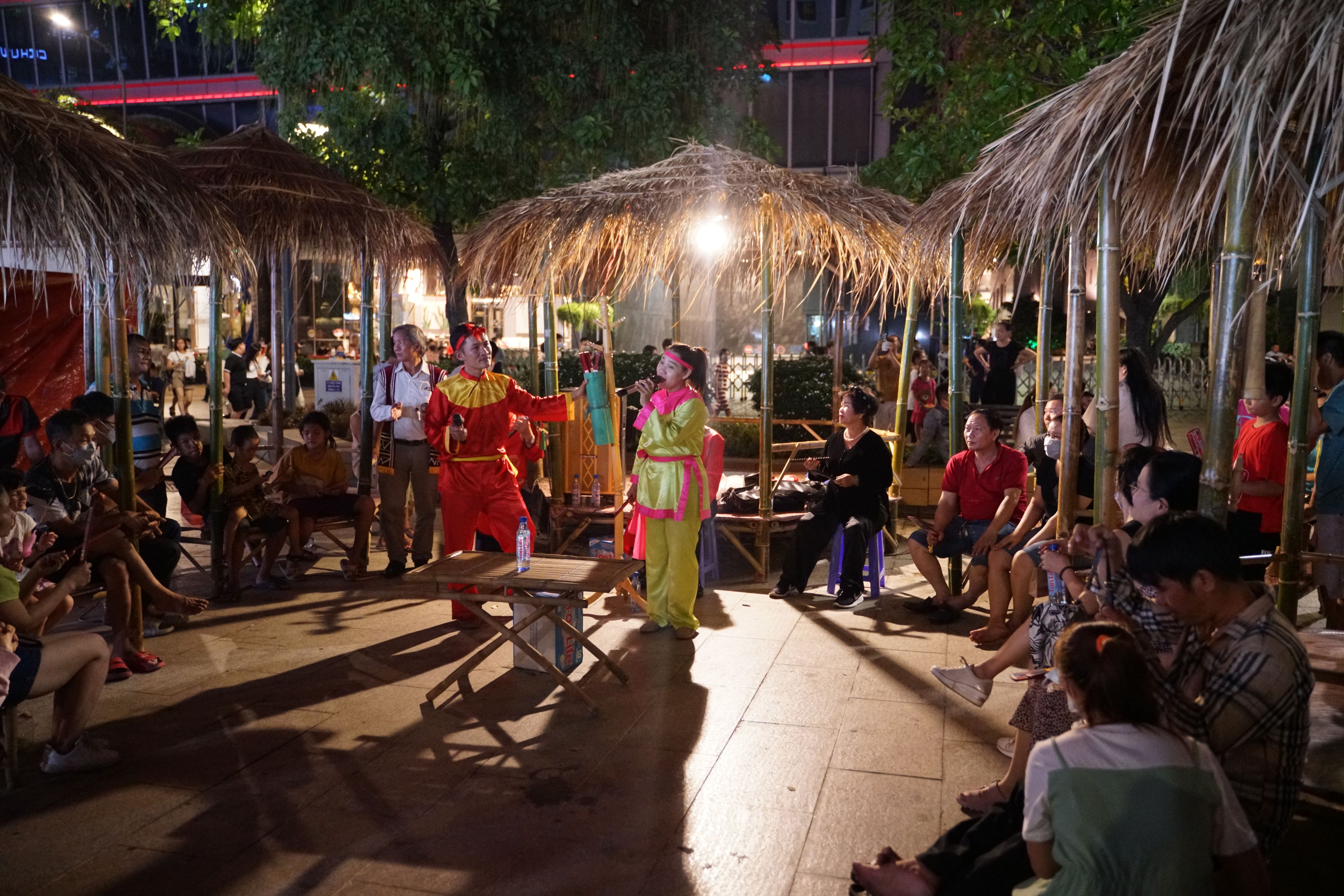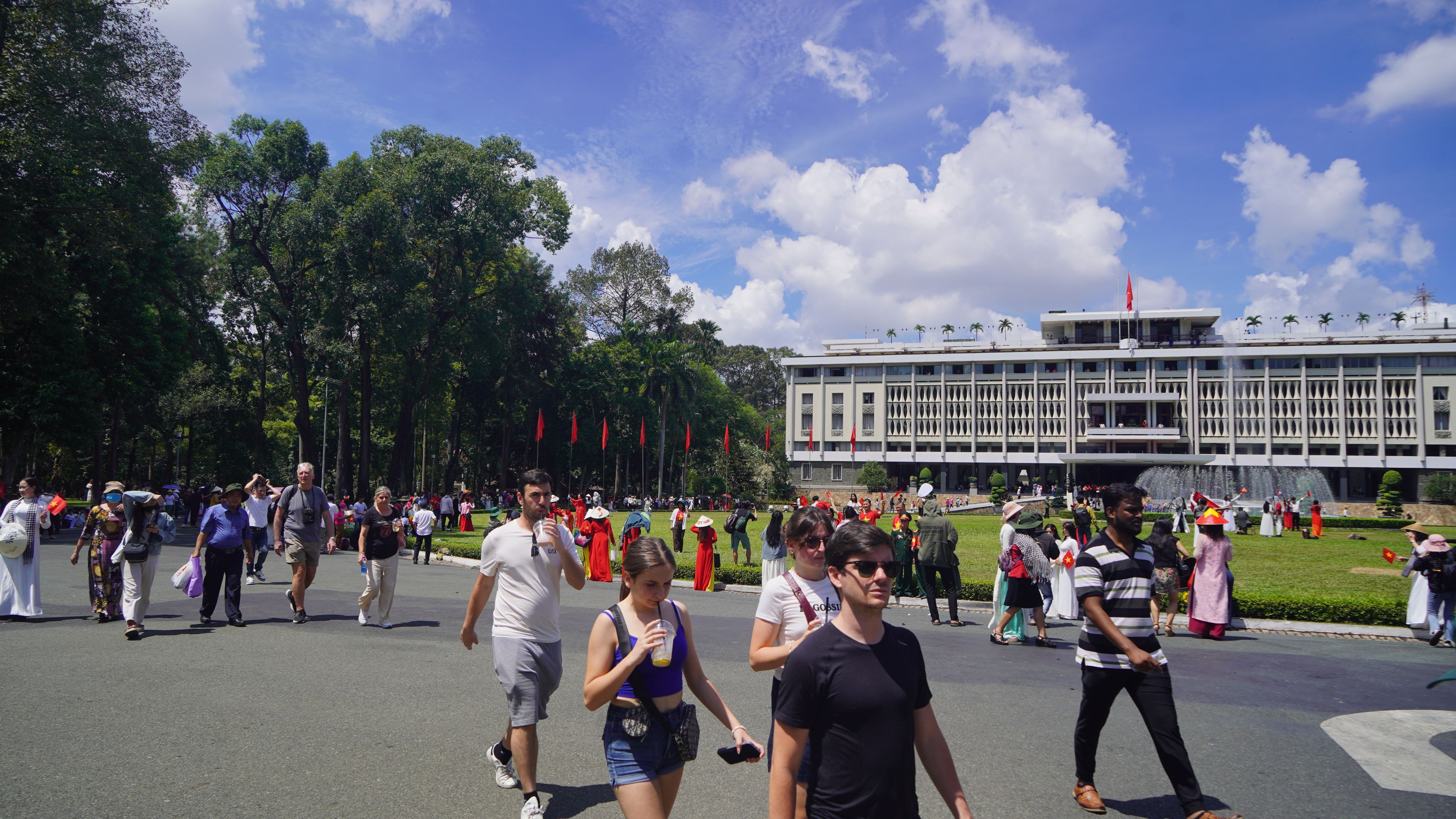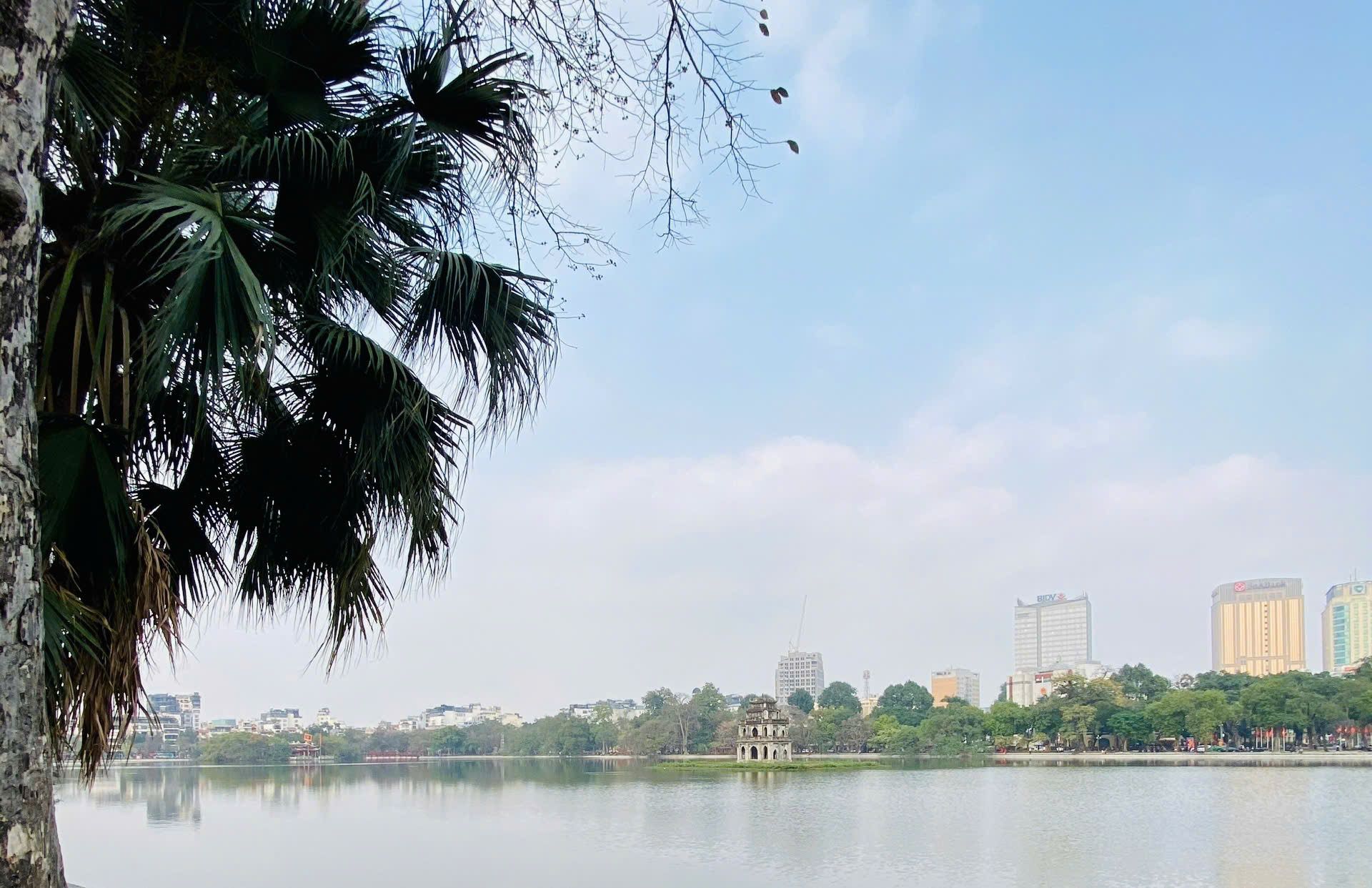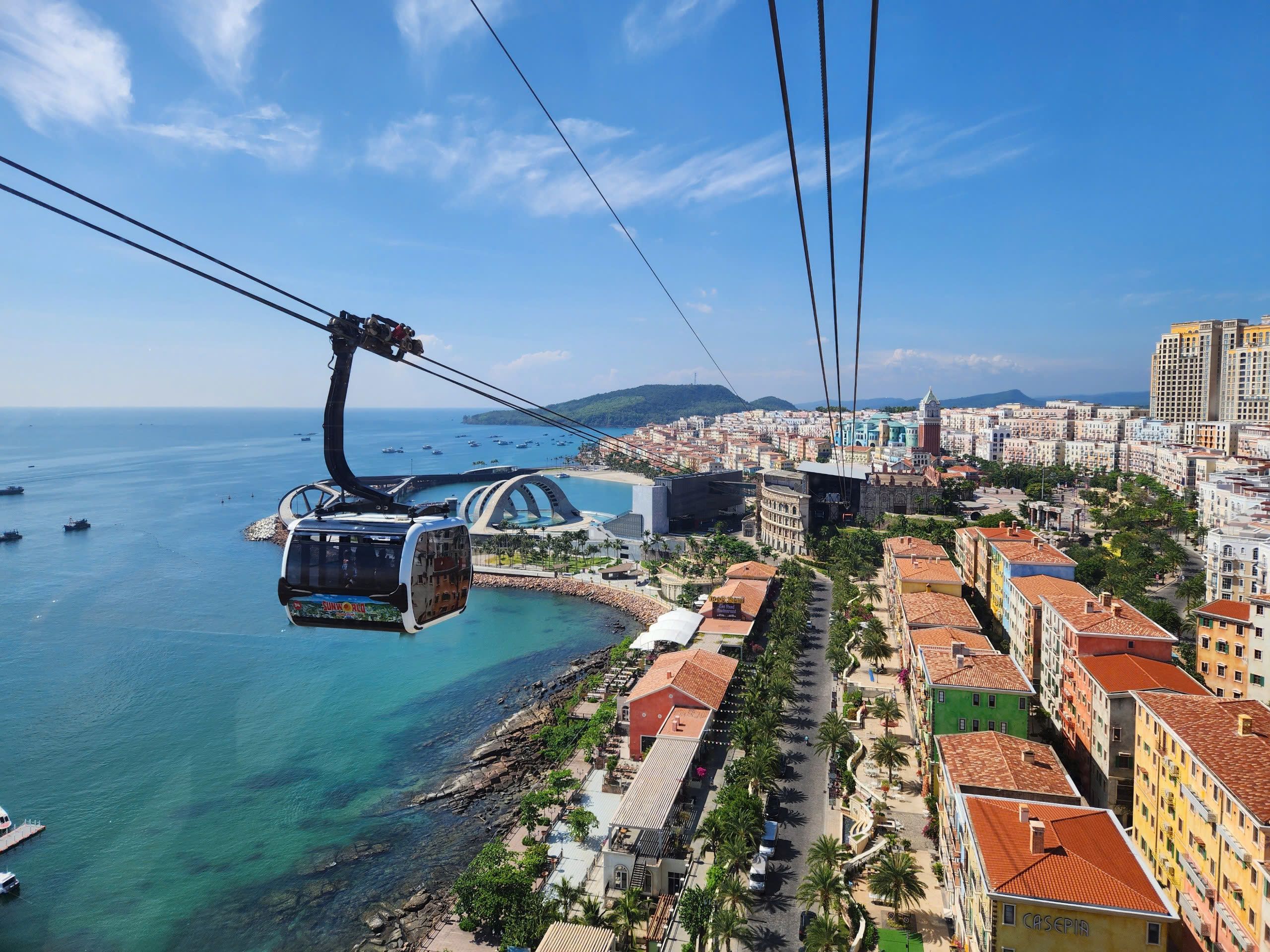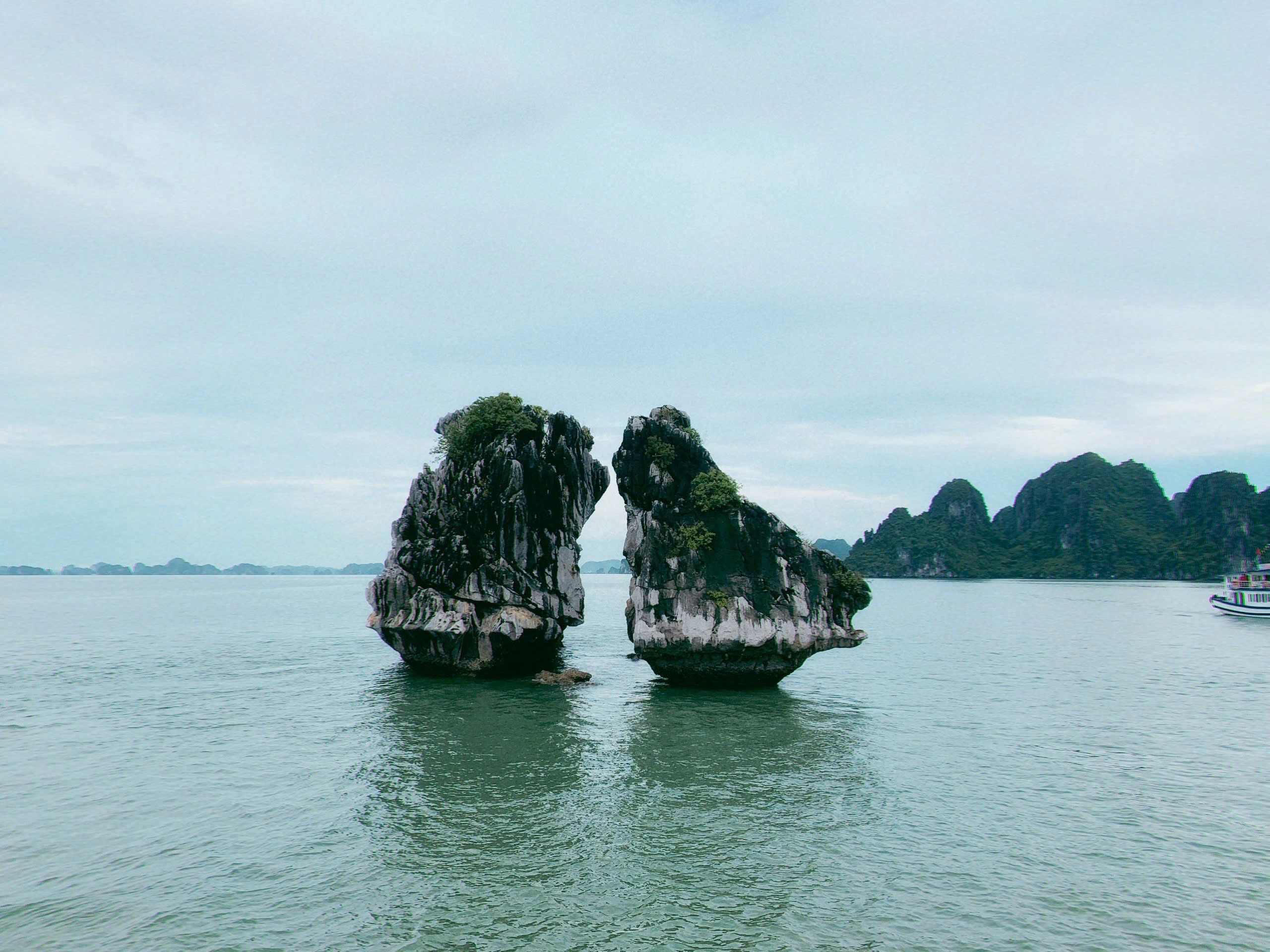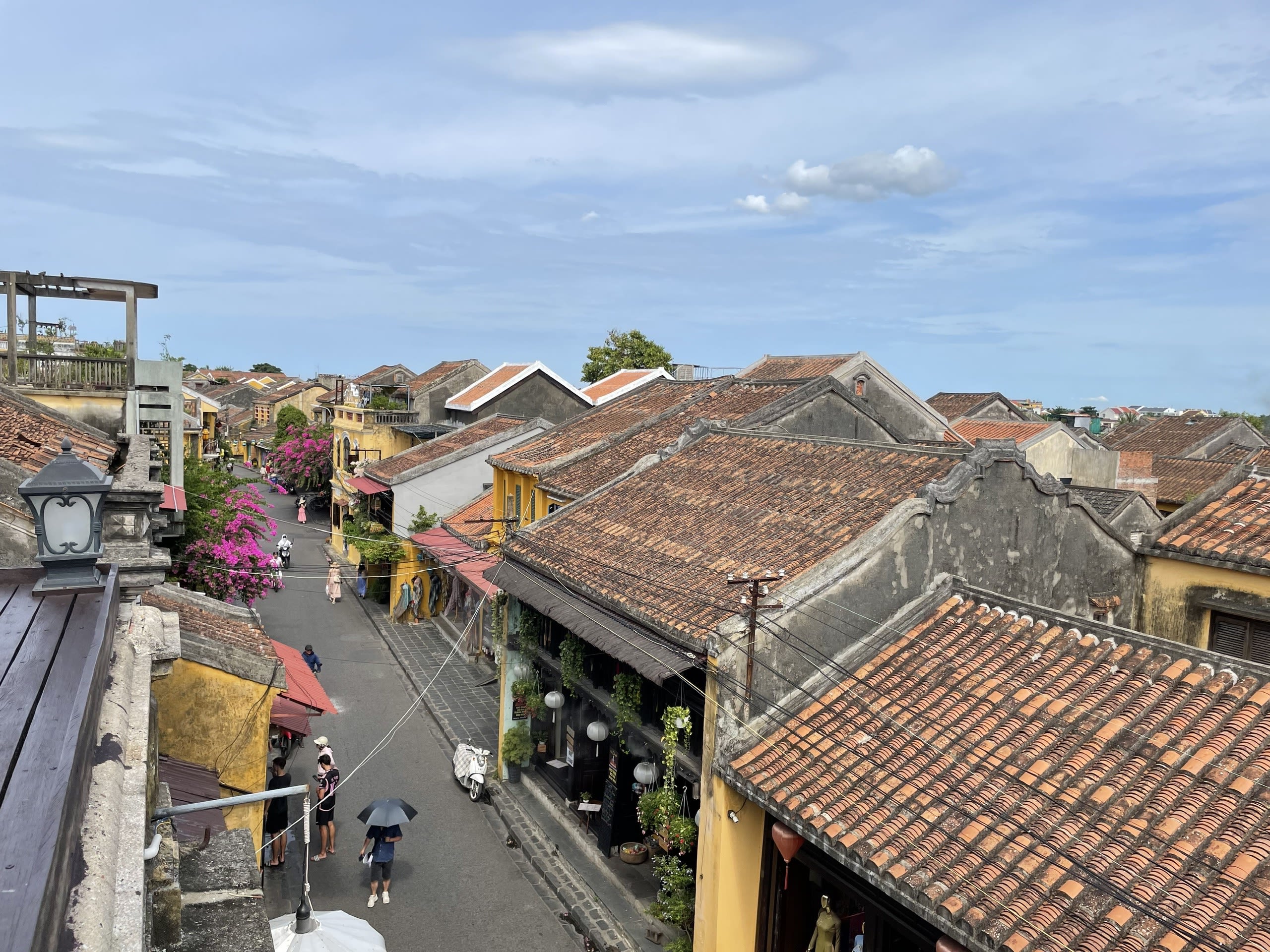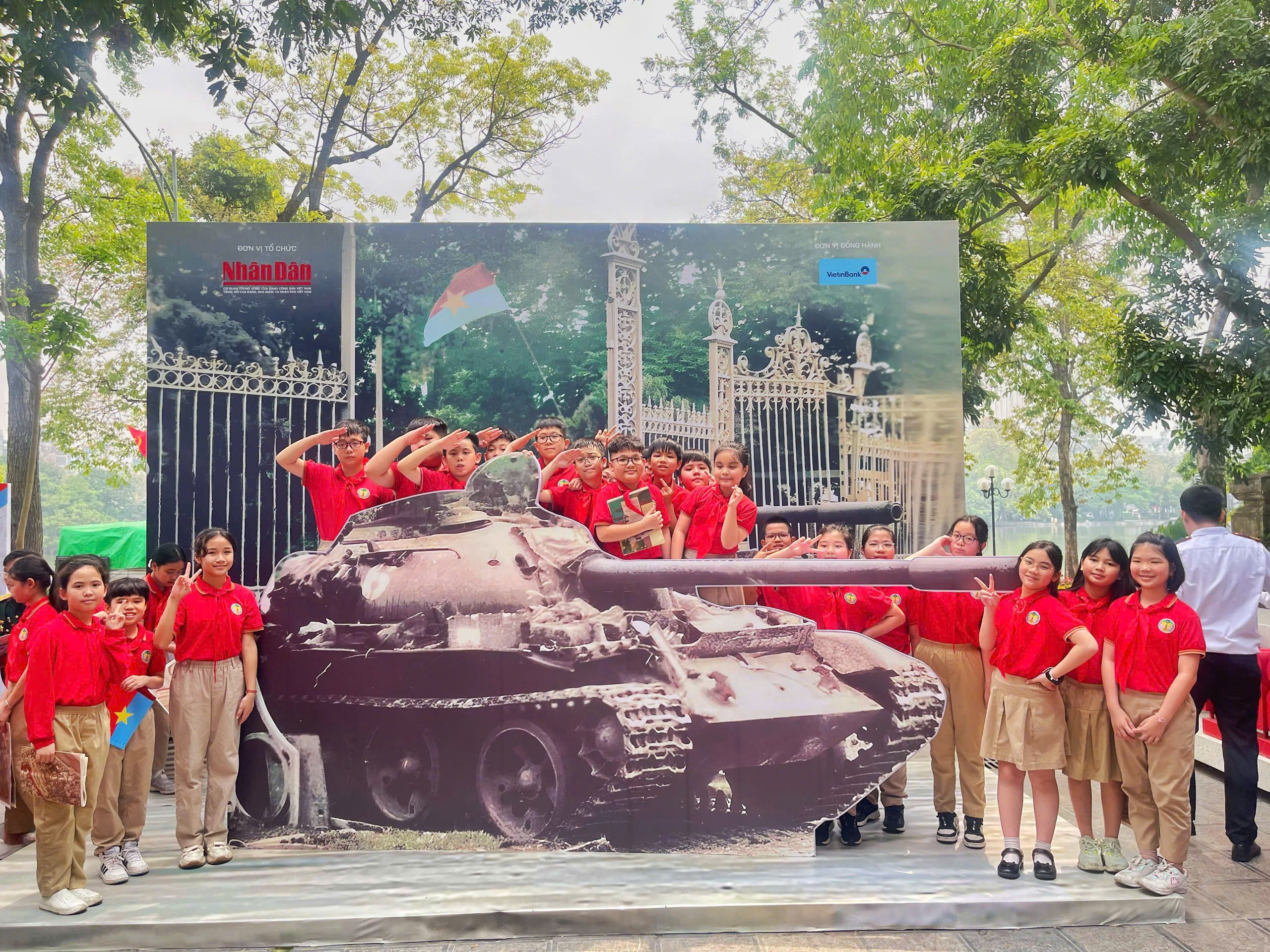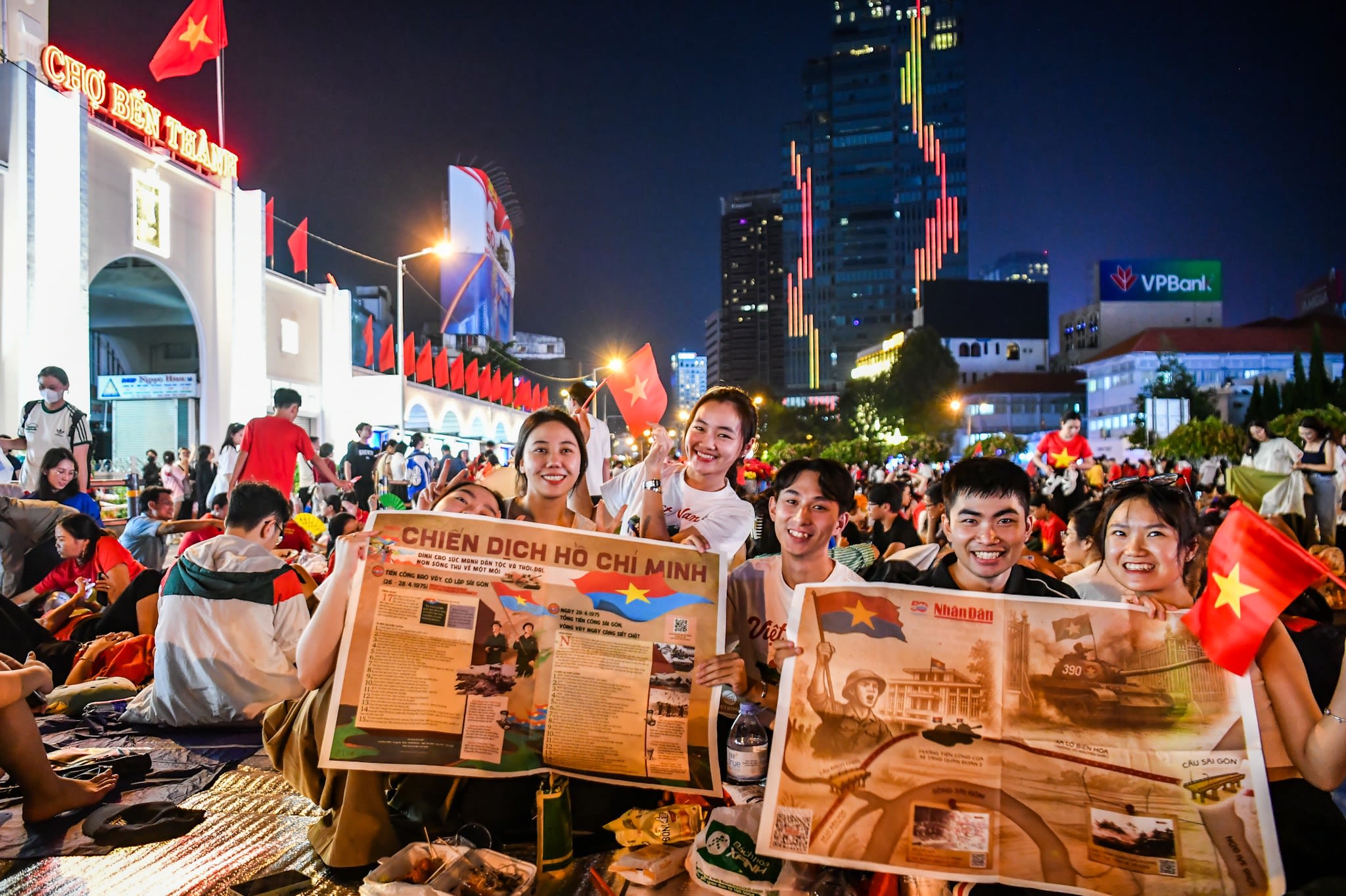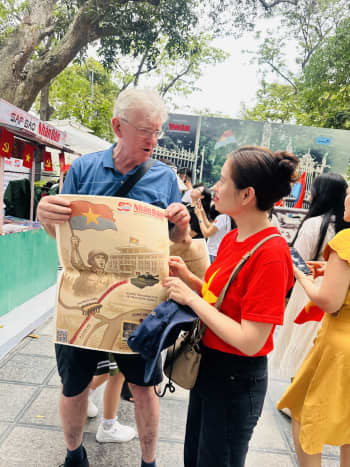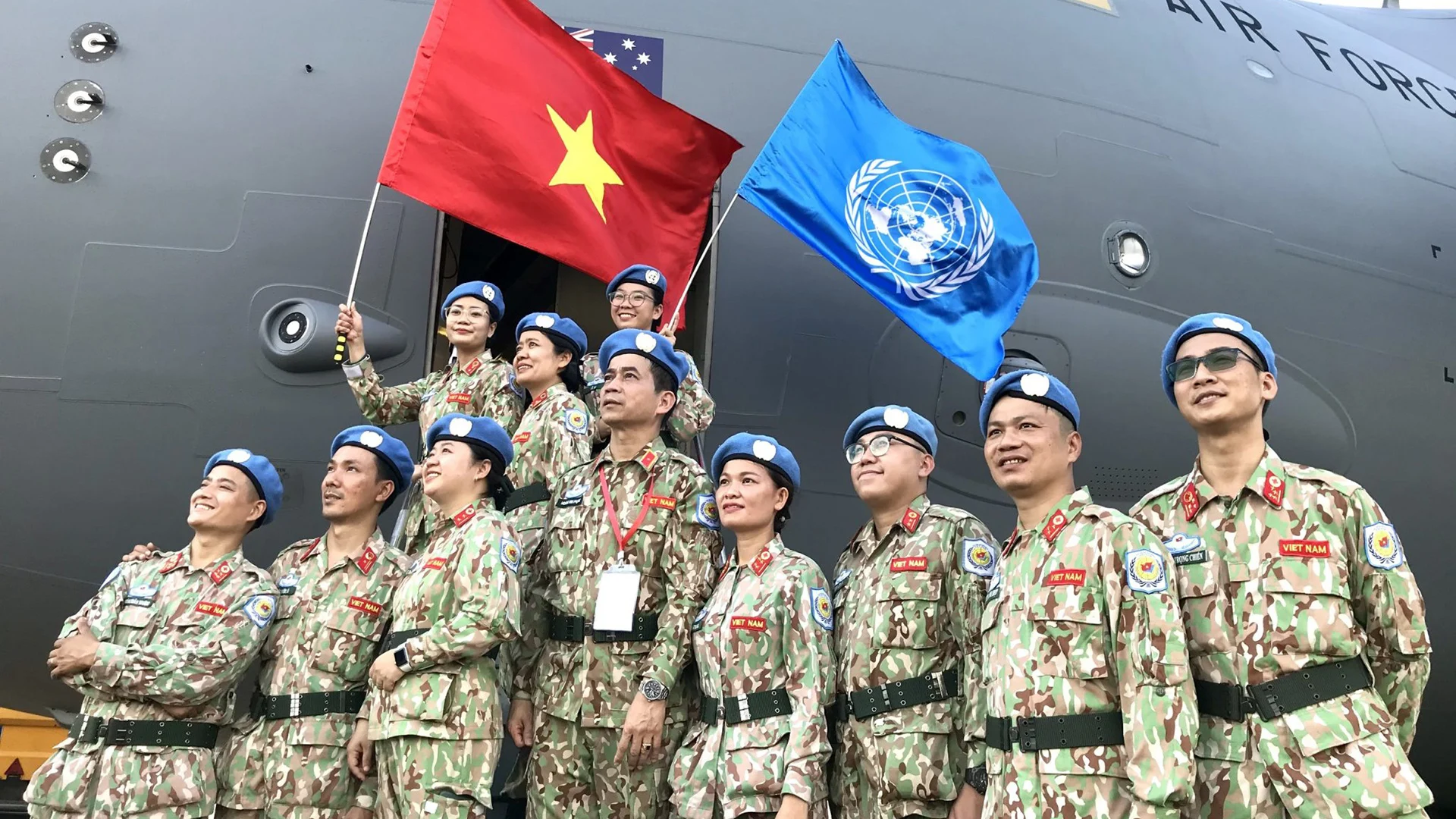Vietnam:
A 50-Year Journey of Asserting Its Position and Identity on the Global Stage
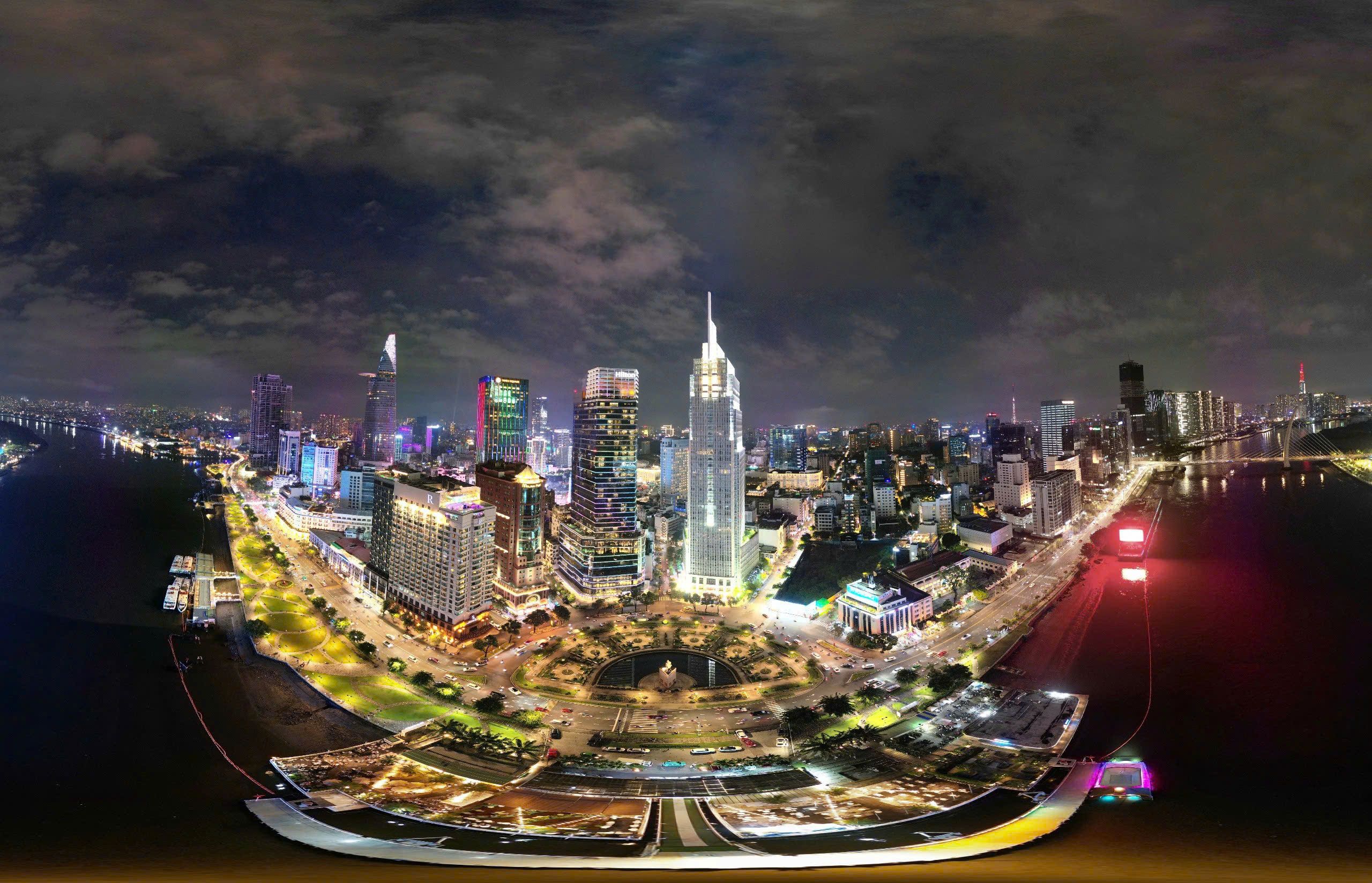
The year 2025 marks 50 years since the reunification of Vietnam - a proud milestone in the country’s journey to build the image of a peaceful, responsible, reputable and culturally rich nation in the international arena. From a war-ravaged country, Vietnam has risen strongly to become an active member of the global community, contributing to peace, cooperation and sustainable development, while spreading its unique cultural identity.

A Growing Presence on the International Stage
Since joining the United Nations in 1977, Vietnam has continuously asserted its role in international organisations. Over the past half-century, Vietnam has held many important positions, demonstrating responsibility and leadership. Notably, the country successfully served as a non-permanent member of the UN Security Council for the 2020-2021 term, earning high praise from the international community for its constructive contributions. In 2023, Vietnam continued its leadership role as Vice President of the 77th UN General Assembly and as a member of the UN Human Rights Council for the 2023-2025 term, affirming its growing role in shaping global policies.
Vietnam has also actively participated in regional mechanisms such as the Association of Southeast Asian Nations (ASEAN), the Asia-Pacific Economic Cooperation (APEC), and the ASEAN Inter-Parliamentary Assembly (AIPA). Within ASEAN, Vietnam has played a key role in maintaining unity and building a strong ASEAN Community, particularly through initiatives launched during its 2020 ASEAN Chairmanship. These efforts have not only strengthened regional cooperation but also enhanced Vietnam’s international reputation.
Party General Secretary and President To Lam speaks at the UN Summit of the Future in 2024. (Photo: VNA)
Party General Secretary and President To Lam speaks at the UN Summit of the Future in 2024. (Photo: VNA)
Vietnam has also been active in shaping key global agendas, such as the Summit of the Future and the Global Plastics Treaty, while contributing to efforts to tackle climate change and ensure food security. These initiatives not only reflect Vietnam’s sense of responsibility but also position the country as a trusted partner in the international community.
Vietnam’s foreign policy, as outlined at the 13th National Congress of the Communist Party of Vietnam in 2021, emphasises independence, self-reliance, peace, friendship, cooperation and development. In a world facing challenges such as conflicts, climate change, and non-traditional security threats, Vietnam has taken the lead in peace-building and promoting multilateral cooperation.
Prime Minister Pham Minh Chinh delivers the opening speech at the P4G Summit 2025 in Hanoi. (Photo: NDO/DUY LINH)
Prime Minister Pham Minh Chinh delivers the opening speech at the P4G Summit 2025 in Hanoi. (Photo: NDO/DUY LINH)
In 2025, Vietnam hosted the P4G Summit under the theme “Sustainable and People-Centred Green Transition”. With the participation of General Secretary To Lam, Prime Minister Pham Minh Chinh, and international leaders, the summit underscored Vietnam’s role in connecting governments, businesses, and social organisations to develop breakthrough solutions for green growth. Prime Minister Pham Minh Chinh emphasised that green transition is an inevitable journey, an objective requirement, a strategic choice, and a top priority for achieving sustainable development goals.
One of the highlights of Vietnam’s foreign affairs is its participation in UN peacekeeping operations. Since 2014, Vietnam has deployed military and police personnel to peacekeeping missions in South Sudan and the Central African Republic. To date, hundreds of Vietnamese officers have served, carrying with them the nation’s spirit of responsibility and resilience.
In 2023 and 2025, Vietnam actively contributed to international humanitarian efforts, reflecting global solidarity and responsibility. In 2023, Vietnam provided timely humanitarian aid to help people affected by the devastating earthquake in Turkey. In 2025, Vietnam reaffirmed its humanitarian role by assisting Myanmar after a 6.8-magnitude earthquake struck Sagaing in March, causing significant human and material losses. Vietnamese rescue teams, along with medical supplies and relief goods, were swiftly deployed to support search, rescue, and recovery efforts.
These contributions not only enhanced Vietnam’s global image but also reaffirmed its vital role in promoting peace, stability, and sustainable development. The international community, including UN Secretary-General Antonio Guterres, hailed Vietnam as a model of peace and sustainable development, recognising its continuous efforts in humanitarian and international cooperation initiatives.
People in the earthquake-affected areas of Myanmar express heartfelt gratitude to the Vietnamese rescue and relief forces.
People in the earthquake-affected areas of Myanmar express heartfelt gratitude to the Vietnamese rescue and relief forces.
Earthquake-affected residents in Turkey bid farewell to the "Uncle Ho’s soldiers" of the Vietnamese People's Army rescue and relief team.
Earthquake-affected residents in Turkey bid farewell to the "Uncle Ho’s soldiers" of the Vietnamese People's Army rescue and relief team.
Vietnam has shown strong commitment to addressing climate change and promoting sustainable development. At the COP26 conference in 2021, Vietnam pledged to achieve net-zero emissions by 2050 and launched its National Green Growth Strategy for the 2021-2030 period, with a vision to 2050. The strategy aims to reduce greenhouse gas emissions, green the economy, and promote sustainable lifestyles.
Vietnam has also made significant progress in digital transformation. The 13th Party Congress identified digital transformation as one of the main drivers for rapid and sustainable development. In 2024, Vietnam rose to 71st place out of 193 countries in the United Nations E-Government Development Index, up 15 ranks from 2022. Digital initiatives have not only boosted the economy but also strengthened governance and global integration capabilities.
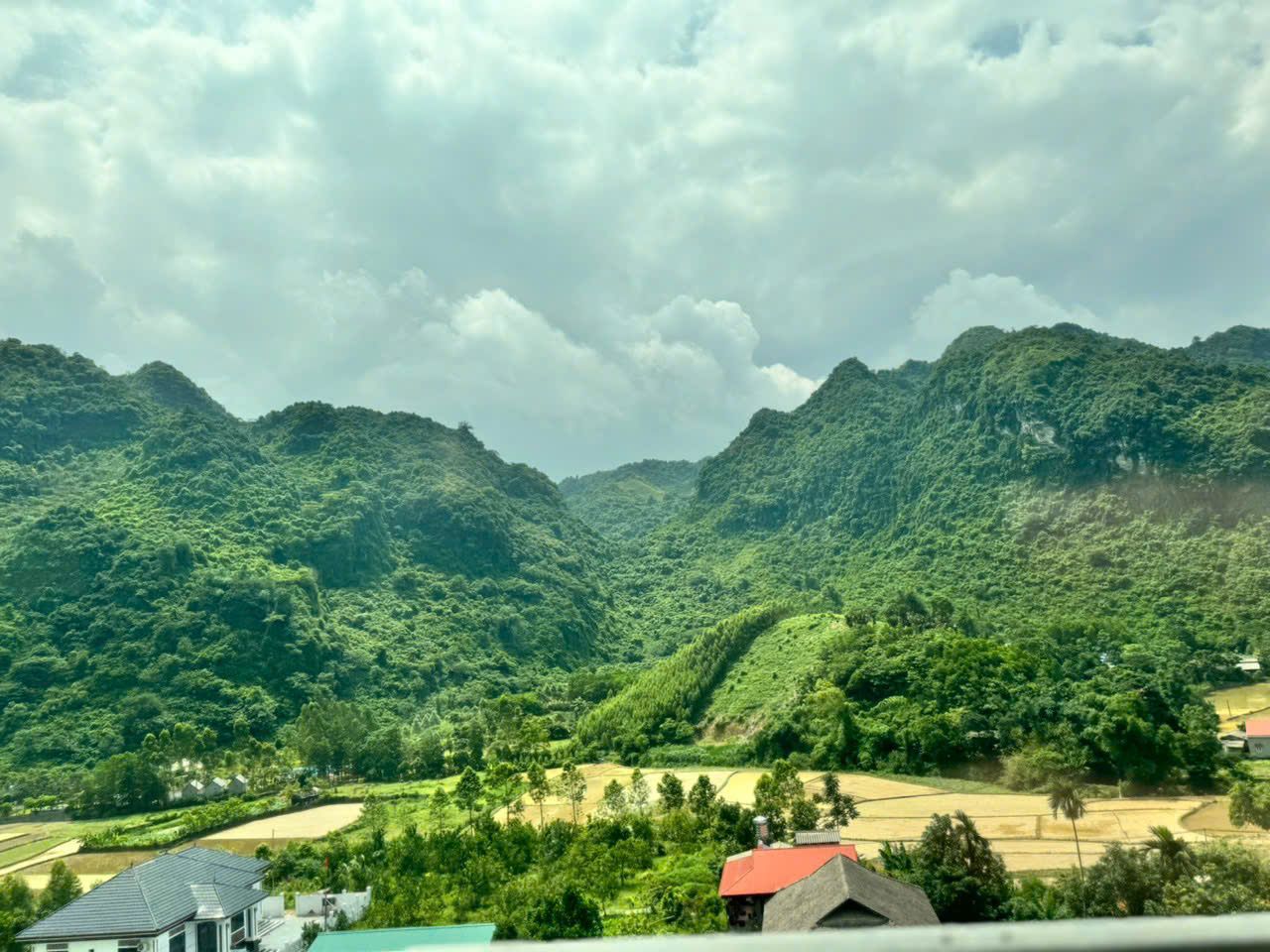
The Mother Goddesses of the Three Realms was recognised by UNESCO as a Representative Intangible Cultural Heritage of Humanity.
The Mother Goddesses of the Three Realms was recognised by UNESCO as a Representative Intangible Cultural Heritage of Humanity.
Bai Choi singing was added to the UNESCO Representative List of the Intangible Cultural Heritage of Humanity.
Bai Choi singing was added to the UNESCO Representative List of the Intangible Cultural Heritage of Humanity.
Cultural diplomacy has become a key pillar in Vietnam’s foreign policy strategy. According to Decision 2013/QĐ-TTg by the Prime Minister, the Cultural Diplomacy Strategy to 2030 aims to bring Vietnamese culture to the world, honour traditional values, and embrace global cultural excellence.
In recent years, Vietnam has organised various international cultural events such as Vietnam Culture Weeks and Vietnam Days in strategic partner and neighbouring countries. By 2030, all Vietnamese overseas missions will establish a “Vietnam Corner” or “Vietnam–Ho Chi Minh Space” to promote national culture. Vietnam has also successfully lobbied UNESCO to recognise six additional titles and heritage elements, bringing the total to 71, creating new resources for local cultural and economic development.
Vietnamese cultural values, especially the Ho Chi Minh ideology and the country’s UNESCO-recognised figures, have become important bridges connecting Vietnam with the international community. Heritages such as the worship of the Mother Goddesses of the Three Realms, Hue Royal Court Music, the Space of Gong Culture in the Central Highlands, and Quan Ho (Love duet) Folk Songs have enriched the world’s cultural treasury.
Vietnam is increasingly viewed as a reliable partner by investors, tourists, and international friends. In 2024, the country attracted nearly 38.23 billion USD in foreign direct investment (FDI), with disbursed capital reaching a record 25.35 billion USD, up 9.4% from the previous year. Total import-export turnover reached 786.29 billion USD in 2024, up 15.4% year-on-year, with exports growing 14.3% and imports 16.7%, resulting in a trade surplus of 24.77 billion USD. These achievements reflect Vietnam’s political stability, favourable investment climate, and international economic integration.
Lapetina David, Engineering Director at Money Forward Vietnam
Lapetina David, Engineering Director at Money Forward Vietnam
According to Lapetina David, Engineering Director at Money Forward Vietnam, the country has made impressive strides in post-pandemic economic recovery and development. After a slowdown in 2020-2021, Vietnam rebounded with 8% GDP growth in 2022 and maintained a stable 5.1% in 2023. These gains stem from smart legal reforms, especially around foreign investment, and the resilience of Vietnamese society and economy.
Vietnam has kept inflation under control, maintained a low unemployment rate, and prioritised the development of high-tech industries, green energy, and healthcare. Liberal foreign investment policies, along with improved English proficiency and higher education quality, are helping Vietnam become a more attractive destination for global investors. Factors such as a young population, a rapidly growing middle class, and deep integration into global supply chains continue to strengthen Vietnam’s position.
He also believes that Vietnam has strong growth potential in sectors such as fintech, elder care, AI, robotics, and the digital economy. With continued investments in infrastructure, digital transformation, and legal reforms, Vietnam could not only sustain its growth momentum but also emerge as a leader in the Asia-Pacific region in the coming decade.
Vietnam has also become a top global travel destination. In 2024, the country welcomed over 17.5 million international tourists, up 39.5% from 2023 and meeting its annual target. Destinations such as Ha Long, Hoi An, Hue, and Ninh Binh stand out not only for their natural beauty but also for their integration of cultural and environmental conservation.
Vietnam’s tourism sector has made a strong impression, cementing its place on the global tourism map. In 2024, the country was honoured by the World Travel Awards as “Asia’s Leading Destination,” “Asia’s Leading Heritage Destination,” and “Asia’s Leading Nature Destination”.
Cities such as Hanoi (Asia’s Leading City Destination 2024), Ho Chi Minh City (Asia’s Leading Business Travel Destination and Asia’s Leading Festival and Event Destination 2024), and Da Nang and Phu Quoc (Asia’s Leading Luxury Island Destinations 2024) continued to receive numerous international awards for their unique blend of cultural heritage, stunning landscapes, and exceptional service quality.
Green transformation has become a central trend in Vietnam’s tourism development. According to the National Action Plan on Green Growth for the 2021-2030 period, the tourism industry prioritises eco-friendly tourism products. Provinces such as Ninh Binh, Quang Nam, and Lao Cai have successfully linked tourism with heritage preservation and biodiversity, creating long-term appeal.
"Fifty years after its reunification, Vietnam stands as a remarkable example of resilience and success. Its sustained economic development, integration into global trade, active role in multilateral institutions, and ability to engage with all parties are clear strengths. Vietnam thus offers the world a message of hope through its ability to turn the painful pages of history and build a future focused on peace, progress, and cooperation."
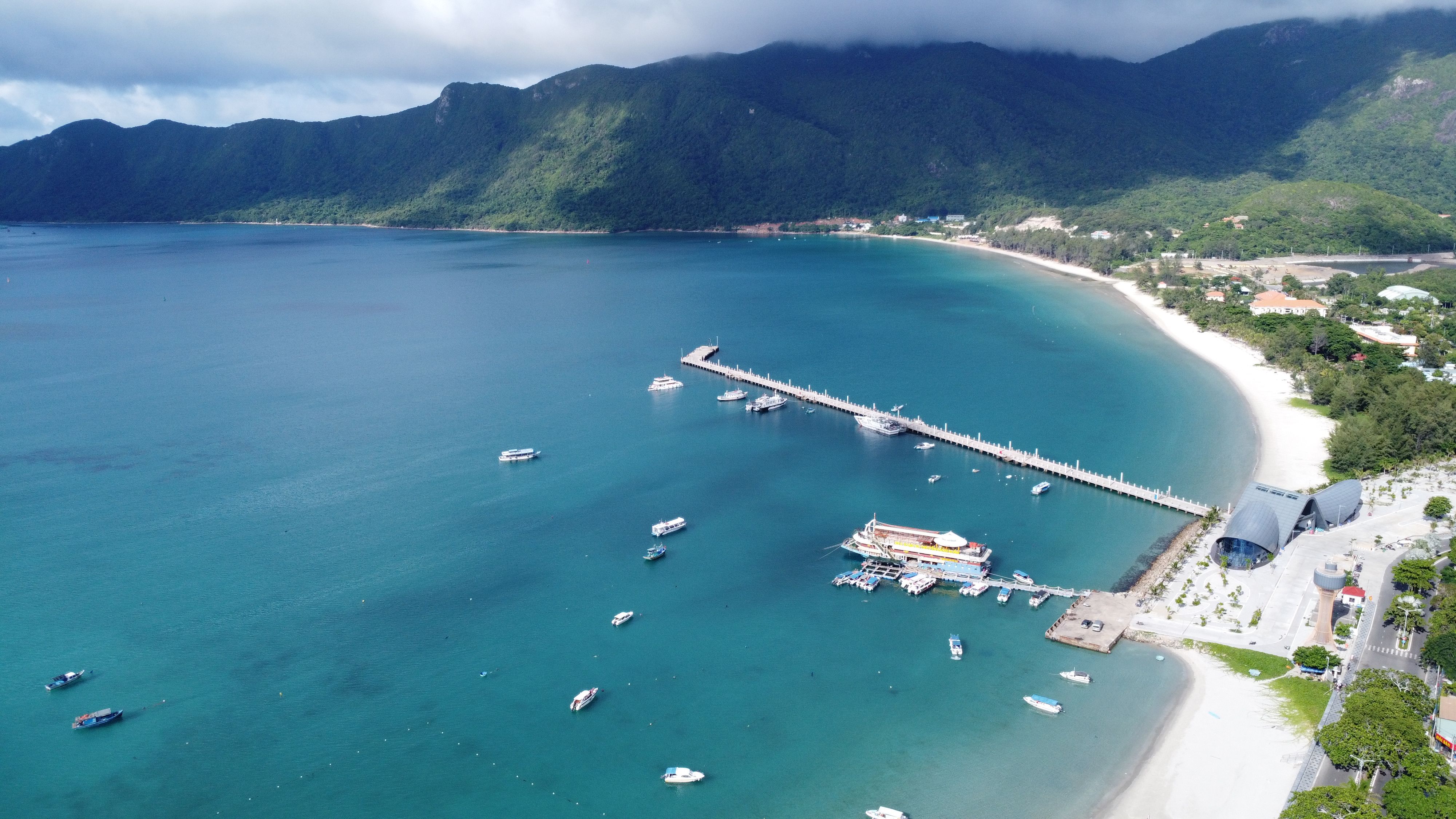
The Independence Palace in Ho Chi Minh City is an attractive destination for foreign visitors.
The Independence Palace in Ho Chi Minh City is an attractive destination for foreign visitors.
Hoan Kiem Lake is the heart of the capital city of Hanoi.
Hoan Kiem Lake is the heart of the capital city of Hanoi.
Phu Quoc is one of the most attractive destinations in Vietnam.
Phu Quoc is one of the most attractive destinations in Vietnam.
Ha Long Bay has been recognised by UNESCO as a World Natural Heritage three times.
Ha Long Bay has been recognised by UNESCO as a World Natural Heritage three times.
Hoi An Ancient Town, Quang Nam Province, is a living museum preserving ancient architectural values.
Hoi An Ancient Town, Quang Nam Province, is a living museum preserving ancient architectural values.
Over the 50 years since national reunification, Vietnam has transformed from a war-torn country into a beacon of peace, cooperation and sustainable development on the global stage. During the journey of asserting its position and identity on the international stage, the young generation of Vietnam today is continuing and promoting the national tradition in creative and modern ways, demonstrating a deep sense of patriotism and national pride. They are not only participating in traditional activities but are also actively innovating how they express these values, aligning with the digital age.
Students from Trang An Primary School visit Nhan Dan Newspaper's exhibition on national reunification.
Students from Trang An Primary School visit Nhan Dan Newspaper's exhibition on national reunification.
During the celebration of the 50th anniversary of the Liberation of the South and National Reunification, the young generation of Vietnam actively took part in commemorative and historical education activities, embodying the spirit of historical continuity. Notably, the interactive exhibition organised by Nhan Dan Newspaper at its headquarters at 71 Hang Trong Street, Hanoi, became a major attraction for young people. The newspaper also distributed 500,000 free copies of its special supplement nationwide over more than 10 days of the exhibition. Hundreds of thousands of young attendees lined up to experience modern technologies such as 3D mapping, augmented reality (AR), and virtual reality (VR), which allowed them to engage with history in a vivid and profound way.
Le Quoc Minh, Editor-in-chief of Nhan Dan Newspaper, emphasised that this special media campaign was meticulously prepared over six months, aiming to produce rich and meaningful journalism that connects generations and spreads historical values to the public—especially the youth.
The joy of young people in Ho Chi Minh City as they receive Nhan Dan Newspaper's special supplement in celebration of national reunification.
The joy of young people in Ho Chi Minh City as they receive Nhan Dan Newspaper's special supplement in celebration of national reunification.
According to Minh, this media campaign is not only a tribute to historical achievements but also reflects the responsibility of revolutionary journalism in nurturing patriotism and national pride among today’s and future generations. A key goal of recent Nhan Dan projects has been to use journalism and technology to deliver historical lessons to young people, especially students, including those at the primary level.
During a meeting with the Japan International Cooperation Agency (JICA), Minh introduced the special supplement of Nhan Dan Newspaper and led the delegation through the interactive exhibition. Kobayashi Yosuke, JICA’s Chief Representative in Vietnam, praised the innovative approach, stating that the success of the event not only reflected the creativity of the Nhan Dan team but also demonstrated the vibrant patriotism of Vietnamese youth.
The exhibition attracted not only domestic attention but also high praise from international visitors. A large number of foreign visitors eagerly joined the crowds lining up to receive the special supplement by Nhan Dan Newspaper and to explore the exhibition at its headquarters on April 30. Pat, a visitor from Australia, expressed his joy at his presence in Vietnam on the occasion of the 50th anniversary of national reunification. “Fifty years ago, I was a 17-year-old young man. Even back then, I was aware of the war in Vietnam. After 50 years, seeing your country’s development and achievements, I truly admire your efforts".
Highly appreciating Nhan Dan Newspaper’s organisation of interactive exhibition, he also said: “At home, I was not sure that young people would come to the exhibition. However, it is wonderful to see young local people interested in caring about the past and history. The newspaper is carrying out a very important way to help the younger generations learn more about the nation’s history.”
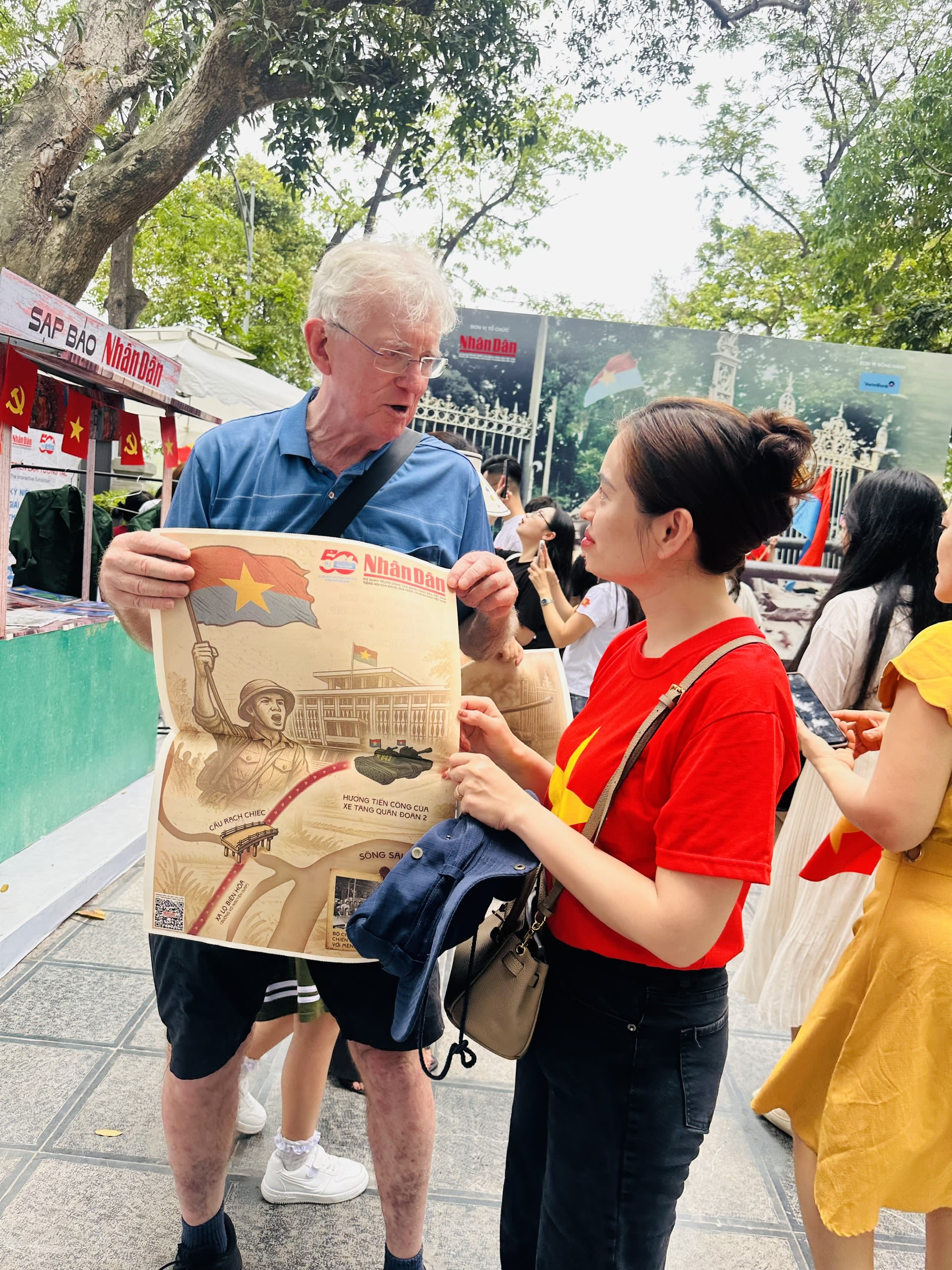
Expressing her delight at the technologies used by the exhibition organisers to convey history, Lucia from Ireland shared that it is a fantastic event to bring historical lessons closer to young people. “We are delighted to see the exhibition and get the special supplement from your newspaper. I also can see the excitement from the youngest,” she said.
Michael Sullivan, a tourist from the US, shared: “I’m very impressed with your interactive exhibition. This is a fantastic combination of print newspapers and technology, offering an engaging perspective on Vietnam’s history, especially the liberation of the South and national reunification. Your event also helps young generations learn about and appreciate your nation’s proud history.”
These activities are not just commemorative events but also serve as clear evidence of how Vietnam’s young generation is continuing traditions and driving innovation, helping to preserve and promote the cultural and historical values of the nation.
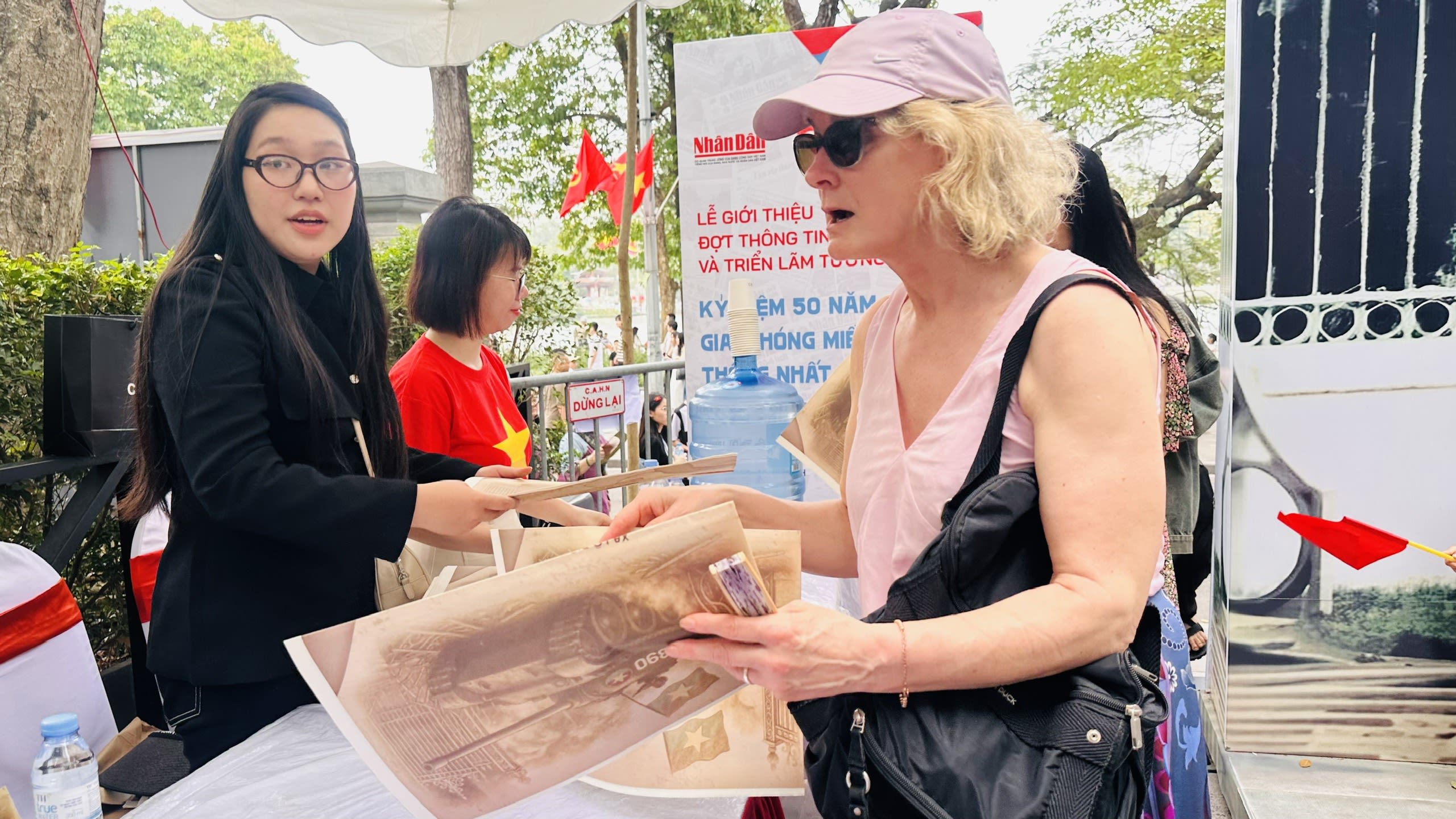
Half a century after national reunification, with an increasingly prominent role through participation in international organisations, peacekeeping efforts, and green and digital transitions, Vietnam has firmly established itself in the global community. At the same time, the soft power of Vietnamese culture - through cultural diplomacy and the flourishing tourism industry - has projected the image of a vibrant, trustworthy and captivating nation. This journey is not only a source of national pride but also a testament to Vietnam’s aspiration to rise, integrate, and contribute to a better world.

Published: April 2025
Content: PHONG VU, HOA BUI, TRAN THUY, KIM LINH
Design: KIM LINH
Photos: THE ANH, VNA, NDO
